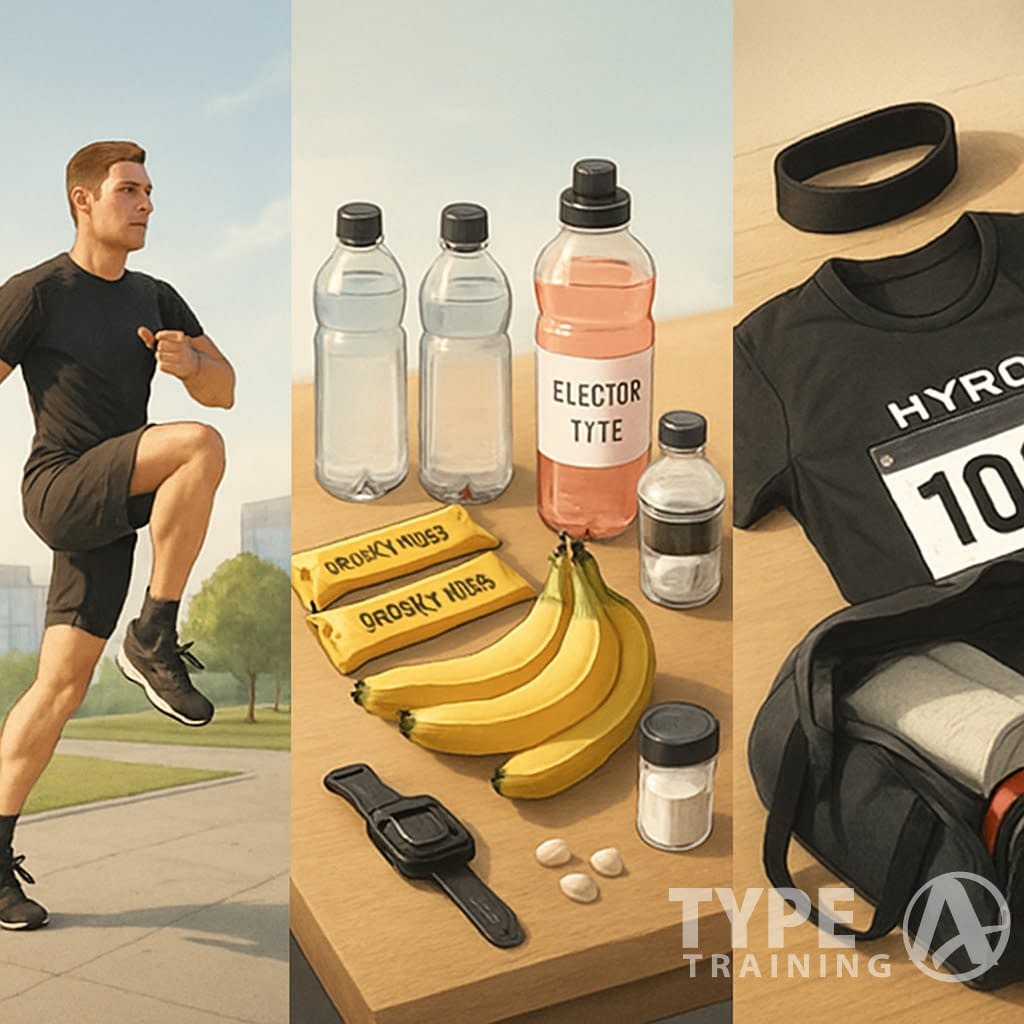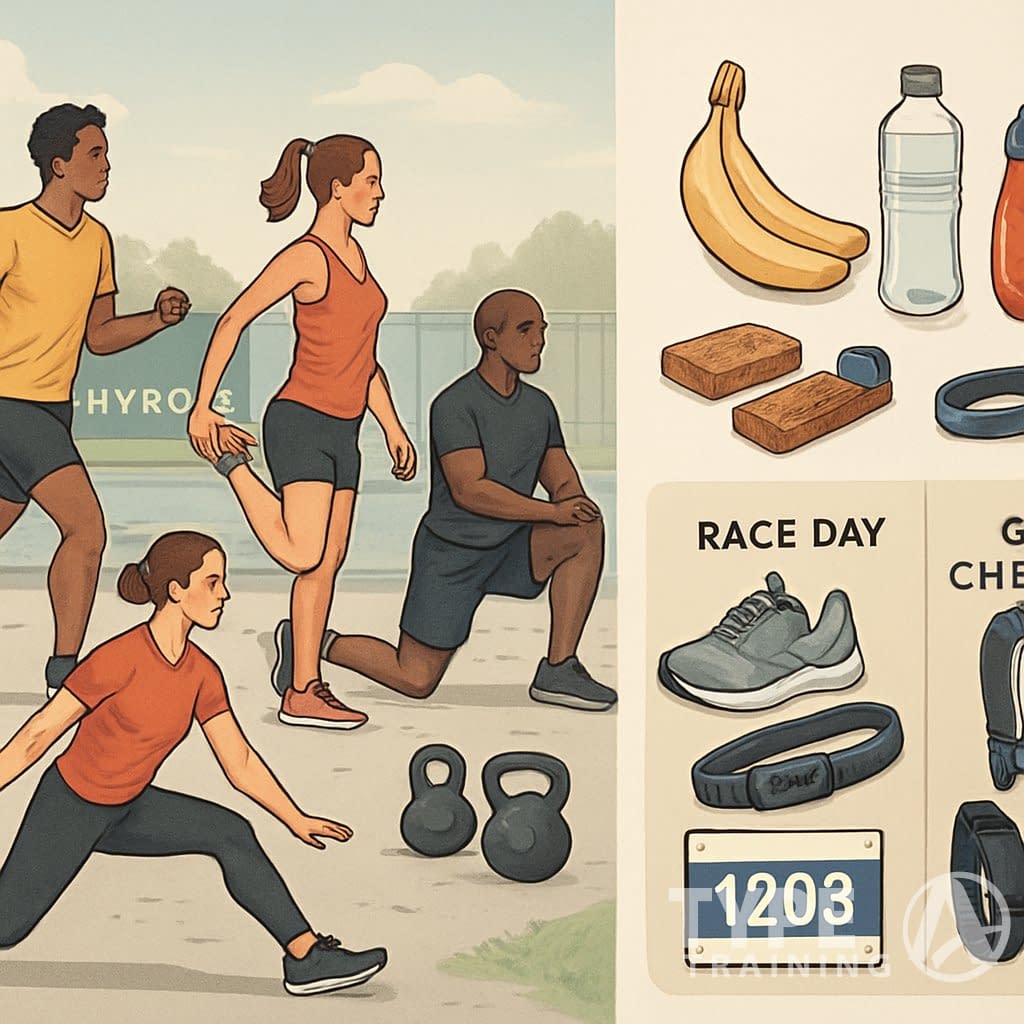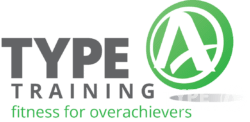Preparing for a HYROX race isn’t just about showing up. You need a plan for warming up, eating right, and packing the right gear so you’re not scrambling at the last minute.
For effective HYROX race day preparation, it’s essential to establish a routine that encompasses all aspects of your performance.
The right preparation keeps you focused and helps you avoid silly mistakes. You’ll move through each station with more confidence.
Good HYROX race day preparation ensures that you are mentally and physically ready for the challenges ahead.
Popular posts:

Your warm-up sets the tone for the whole race. Skip it or rush, and you’ll probably feel stiff and not quite ready.
Your warm-up is a key part of your HYROX race day preparation strategy that shouldn’t be overlooked.
A smart routine gets your muscles firing and your mind in the right place. Nutrition matters just as much, honestly—it gives you steady energy and helps you recover between stations.
By focusing on your HYROX race day preparation, you ensure that your nutrition aligns perfectly with your performance needs.
Gear can seem like a small thing, but the right
Key Takeaways
- A solid pre-race routine builds confidence and reduces stress
- Smart fueling and hydration support steady energy throughout the event
- Proper gear preparation ensures smooth execution on race day
Essential HYROX Race Warm-Up Strategies
Incorporating these strategies into your HYROX race day preparation can significantly enhance your performance.

A good HYROX warm-up makes you more flexible, gets your heart rate up, and targets the muscles you’ll use. Focus on mobility, aerobic activation, and movements that match the stations—think sled push, wall balls, and burpee broad jumps.
Remember, an effective HYROX race day preparation includes focusing on your body’s needs.
Don’t skip steps or rush. That’s a recipe for poor performance and possible injury.
Dynamic Stretches and Flexibility
Dynamic stretches are vital in your HYROX race day preparation to improve flexibility and mobility.
Dynamic stretches get your joints and muscles ready for all the different moves in HYROX. You keep moving while improving flexibility and mobility.
These help you crush lunges, farmer’s carries, and wall balls.
Try:
These movements are crucial for your HYROX race day preparation and getting ready for the event.
- Leg swings (front/back, side-to-side)
- Walking lunges with a torso twist
- Hip circles and arm circles
- Inchworm walkouts
Spend about 5–7 minutes on these. Focus on moving smoothly and using your full range of motion.
Dynamic stretching is especially helpful for your hips, shoulders, and ankles—just what you need for sled pushes and sandbag lunges.
Aerobic Activation and Blood Flow
Aerobic activation is an essential component of your HYROX race day preparation.
You want to raise your heart rate before racing. Aerobic activation gets blood flowing and wakes up your cardiovascular system.
Start with 5–10 minutes of light cardio—maybe rowing, jogging, or SkiErg. Keep it easy; you should be able to talk.
Throw in some quick bursts, like a 20-second run at race pace or a few hard pulls on the rower. This helps you adjust to the intensity you’ll face at each station.
After this, you should feel warm, alert, and ready to work.
Movement-Specific Drills
Movement-specific drills complete your HYROX race day preparation, making you ready for the challenge.
Once you’re warm, practice moves that mimic the HYROX stations. This bridges your warm-up and the race itself.
Do 2–3 low-intensity rounds of:
- Light sled push or pull (keep the weight low)
- Wall balls with a lighter ball
- A few burpee broad jumps
- Farmer’s carry with lighter kettlebells
Keep reps low—just enough to wake up those muscles. Maybe toss in a few sandbag lunges or easy SkiErg pulls.
These drills remind your body what to do, so you’re not shocked when you hit the first station.
Common Warm-Up Mistakes
A lot of athletes skip their warm-up or push too hard before the race. Either one can mess with your performance.
Avoiding common mistakes during your HYROX race day preparation can greatly improve your performance.
Skipping leaves you cold and stiff. Overdoing it just drains your energy.
Don’t:
- Only do static stretching (that won’t get your heart rate up)
- Spend too long on the cardio machines
- Use heavy weights during practice sets
- Lose track of time and finish your warm-up too early or late
Aim for 20–30 minutes total. Make it structured, progressive, and HYROX-specific.
Race Day Nutrition and Hydration
What you eat and drink before and during HYROX really affects your energy and recovery. Meal timing, carb intake, and fluid balance all matter if you want to avoid crashing or having stomach issues.
Proper nutrition is a cornerstone of effective HYROX race day preparation.
Pre-Race Meal Planning
Eat something familiar, easy to digest, and carb-focused. Go for high-carb, low-fiber, low-fat foods—think white rice, oatmeal, bananas, or toast with a little nut butter.
Have your main meal about 3–4 hours before start time. This gives your body time to digest and store glycogen.
If your race is early, keep breakfast light. Maybe a bagel with honey or a small bowl of cereal.
If you get hungry in the last hour, grab a small snack—a piece of fruit, an energy bar, or a sports drink. Don’t try new foods on race day. That’s just asking for trouble.
Carb Loading and Energy Management
Focus on carb loading as a part of your HYROX race day preparation for optimal energy levels.
Carbs are your main fuel for HYROX. In the 24–48 hours before the race, boost your carb intake to fill up your glycogen stores.
Aim for 6–10 grams of carbs per kilogram of body weight per day. Sources like pasta, rice, potatoes, oats, bread, and fruit work well.
Keep protein moderate and fat low so your digestion isn’t slowed down.
During the race, you probably won’t need a lot of fuel unless your heat goes over 90 minutes. In that case, small carb sources like gels or chews can help keep your energy up.
The trick is to avoid sudden drops in blood sugar and keep your stomach happy.
Hydration and Electrolytes
Hydration is an often-overlooked aspect of HYROX race day preparation that can make a significant difference.
Start hydrating the day before the race. Drink water steadily and add electrolyte-rich fluids to keep your sodium, potassium, and magnesium balanced.
On race morning, drink about 500 ml of water or sports drink 2–3 hours before you start. That way you’re hydrated, not bloated.
In the last 30 minutes, sip a little if you’re thirsty.
During the race, drink at aid stations if you need to. Don’t overdo it though. Try small sips every 15–20 minutes if you can.
If you sweat a lot, go for drinks with electrolytes instead of just plain water.
Optimizing Your Gear Checklist
Your gear should be meticulously prepared, as part of your HYROX race day preparation strategy.
Having the right gear makes your HYROX race a lot smoother. Footwear, clothing, and small essentials all help you stay comfortable and focused.
Investing time in your gear selection is an important aspect of HYROX race day preparation.
Footwear and Apparel
Pick
Avoid super cushioned running
Wear moisture-wicking clothes that let you move freely. Fitted tops and compression shorts or leggings help reduce chafing and keep you dry.
Loose clothes just get in the way. Bring extra socks if the floor’s damp. Grip socks can help with traction if you want.
Checklist:
- Cross-training
shoes with good grip - Compression shorts/leggings
- Breathable top
- Extra socks or grip socks
Accessories and Race Essentials
Accessories can enhance your experience and are a key component of HYROX race day preparation.
Small things can make a big difference. A light watch lets you track your pace without fuss.
Some athletes like fingerless gloves for sled pulls or farmer’s carries. They can help your grip and save your hands.
Carrying a big water bottle isn’t practical during HYROX. Bring a small one or just rely on water stations.
Pack quick snacks like energy gels if you know you’ll need them. Don’t forget ID, race confirmation, and a towel for after. Toss it all in a small gym bag so nothing gets lost.
Checklist:
- Watch or timing device
- Training gloves (optional)
- Small water bottle or hydration plan
- Energy gels/snacks
- ID, confirmation, towel
Transition Area Setup
Setting up your transition area is a vital part of your HYROX race day preparation.
Keep your transition area tidy so you’re not digging for stuff. Use a compact bag with separate pockets for
Lay out your gear in the order you’ll need it—shoes on top, then clothes, then smaller things. Pack a spare shirt or hoodie for after the race; venues can get chilly once you stop moving.
Throw in a recovery snack or electrolyte drink for after. You’ll want it.
Checklist:
- Organized gym bag with compartments
- Race-day
shoes and apparel on top - Spare hoodie or shirt
- Post-race recovery snack/drink
HYROX Race Day Preparation Essentials
Ultimately, the success of your race hinges on comprehensive HYROX race day preparation.
Mental prep is huge. It keeps you focused, helps control your pace, and lets you handle whatever the race throws at you.
A clear plan cuts down on nerves. Simple strategies can help keep your head in the game.
Mindset and Visualization Techniques
Mental strategies also play a significant role in HYROX race day preparation.
You can train your mind like your body. Visualization lets you picture each station, the transitions, and how you want to move.
A few minutes a day imagining the race—seeing yourself running steady, moving with control, finishing strong—actually helps.
Try repeating short affirmations like “steady pace” or “strong finish” during training. It’ll feel natural on race day and help keep you calm when things get tough.
Race Plan Development
A race plan gives you structure. Look at your training data and set realistic pacing goals.
For example, if your average 1 km run in training is 5:15, try to stick with that early in the race.
Break the event into sections. Write down how you’ll approach each station—rest, breathing, transitions.
A simple table helps:
| Segment | Goal | Notes |
|---|---|---|
| Run 1 | 5:15 pace | Stay relaxed |
| Ski Erg | 500m steady | Focus on breathing |
| Run 2 | 5:20 pace | Reset posture |
Decide when you’ll take sips of water or energy gels, and stick to what you practiced. Surprises on race day are never fun.
Managing Pre-Race Nerves
Being nervous before the start is totally normal. You can handle it with a few routines.
Pack your gear the night before so you’re not rushed. Arrive early to settle in.
Try controlled breathing: inhale through your nose for four counts, hold, then exhale slowly. Repeat a few times until you feel calmer.
Focus on what you can control—your pace, your form. Don’t get caught up comparing yourself to others at the start. Stick to your race plan and run your own race.
Station-by-Station Race Execution
If you want to do well at a HYROX event, you’ve got to control your pace and nail your transitions. Every workout station demands a different approach, and honestly, the little things—like how you breathe or tweak your form—can save a ton of energy.
Each aspect of the race requires careful consideration as part of your HYROX race day preparation.
Running Pacing and Strategy
Running takes up most of the race. Each lap is 1 km, and there are 8 laps in total. Go out too hard and, well, you’ll probably regret it by the time you hit the later stations.
Try to run a bit slower than your usual 5K pace. This gives you a chance to catch your breath between stations but still keeps you moving. In the first couple hundred meters of each lap, focus on settling your breathing before you pick up the pace.
Keep your rhythm steady and your posture relaxed. Shoulders down, arms swinging naturally—don’t overthink it. If you can’t speak a short sentence, you’re probably pushing too hard.
SkiErg, Rowing, and Sled Techniques
On the SkiErg, hinge at your hips and pull with both arms, driving through your lats. Try to keep your movement smooth, not jerky, so you don’t waste energy. A solid rhythm helps you stay in control and keeps your heart rate from spiking.
When you’re on the rower, think about taking long strokes. Push with your legs first, then lean back a bit, and finish by pulling with your arms. Don’t rush the return—let the handle come back smoothly while you get ready for the next pull.
The sled push and pull? They’re brutal. For the push, stay low and drive the sled with short, strong steps, hands locked on the poles. For the pull, lean back, brace your core, and pull hand-over-hand as you step back.
Burpees, Farmers Carry, and Sandbag Lunges
Burpee broad jumps are all about control. Land softly, and don’t try to jump too far. Find a rhythm—drop down, jump forward, reset. That’s how you keep the pace without burning out.
For the farmers carry, grip strength is everything. Hold the kettlebells close, shoulders back, and take quick, short steps. If your grip starts to go, shake out your hands for a second during a transition.
Sandbag lunges need balance and patience. Rest the sandbag on your shoulders, brace your core, and step forward with care. Tap your knee down lightly, don’t rush, and keep your breathing steady so your heart rate doesn’t spike.
Wall Balls and Finishing Strong
Wall balls hit you right at the end of the HYROX race. Stand the right distance from the wall so the ball bounces back the way you expect.
Finishing strong is the culmination of all your hard work and HYROX race day preparation.
Drop into a full squat, push up hard through your legs, and toss the ball with your arms. Keep your eyes locked on the target—consistency matters.
Split up your reps into sets you can handle. Sets of 10 or 15 with quick pauses work for a lot of people.
Don’t rest too long or you’ll lose precious seconds.
When you’re almost done, focus more on your form and breathing than just blasting through for speed. A steady rhythm usually gets you through the wall balls with more control.










